Windows 11 introduces an invaluable accessibility feature called Live Captions, which automatically transcribes spoken audio into text displayed on your screen. This feature is particularly helpful for users who are deaf, hard of hearing, or anyone who needs to read speech content due to noisy environments or personal preference. In this guide, we'll show you how to enable Live Captions in Windows 11 and customize their settings for an optimal experience.
How Live Captions Work
Live Captions in Windows 11 are available starting from version 22H2 or later and currently support audio content in English (United States). The feature transcribes spoken audio from any source on your device, including media played through speakers or audio captured via the microphone. However, it focuses solely on speech; other sounds like music or applause are not transcribed. While it can transcribe song lyrics, the accuracy may not be as reliable as it is for spoken words.
Privacy is a significant consideration with Live Captions. All audio processing and transcription occur locally on your device, ensuring that no audio data is sent to Microsoft or any cloud service. This means your audio stays private and is not shared externally.
It's important to note that resource-intensive applications may impact the performance of Live Captions. If you experience lag or dropped captions, consider closing other demanding programs or disabling features like virtual backgrounds during video calls to improve performance.
Enabling Live Captions in Windows 11
Method 1: Using Keyboard Shortcut
Step 1: To quickly enable Live Captions, you can use the keyboard shortcut. Press Windows + Ctrl + L on your keyboard. This will bring up the Live Captions window on your screen.
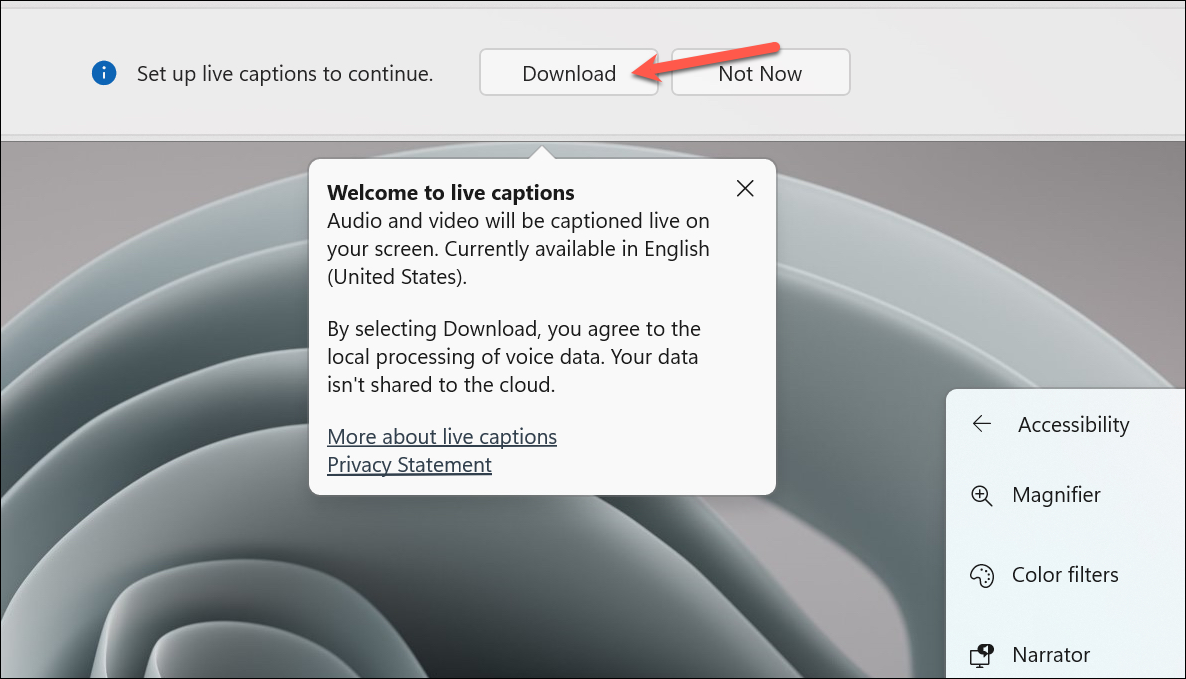
Step 2: If you're enabling Live Captions for the first time, a prompt will appear asking you to download the necessary language files. Click on the 'Download' button in the Live Captions window to proceed.
Step 3: Wait for the download to complete. Once finished, Live Captions will be ready to use immediately, and you'll see the captions appear as audio is detected.
Method 2: Enabling via Quick Settings
Step 1: Click on the 'Battery, Network, and Volume' icon cluster located at the right end of the taskbar to open the Quick Settings panel.
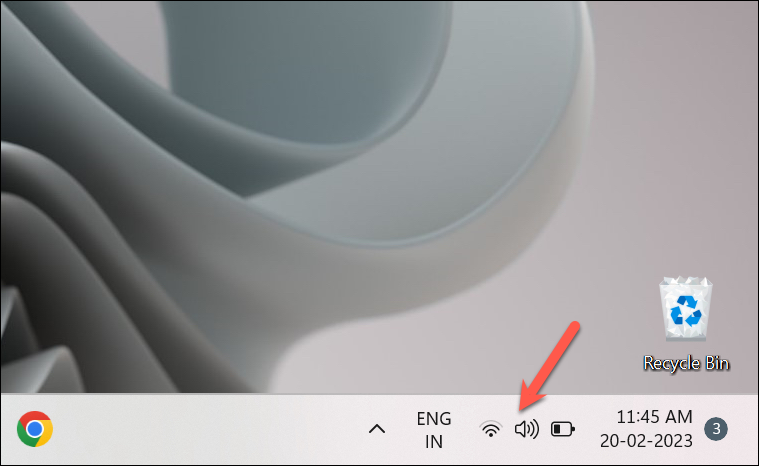
Step 2: In the Quick Settings menu, click on the 'Accessibility' option.
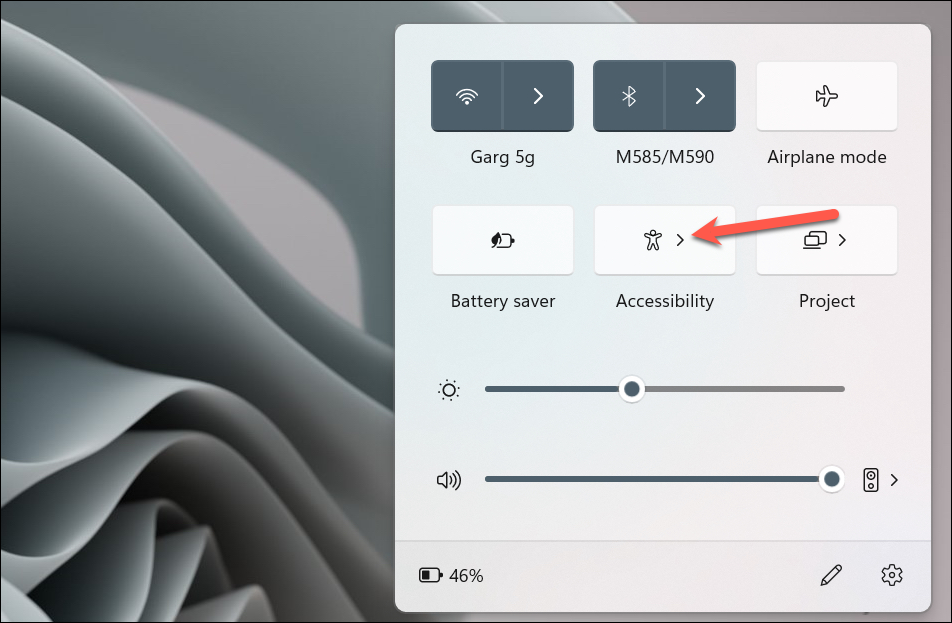
Step 3: Toggle the switch next to 'Live Captions' to enable the feature.

Method 3: Using the Start Menu
Step 1: Click on the 'Start Menu' and then select 'All Apps'.
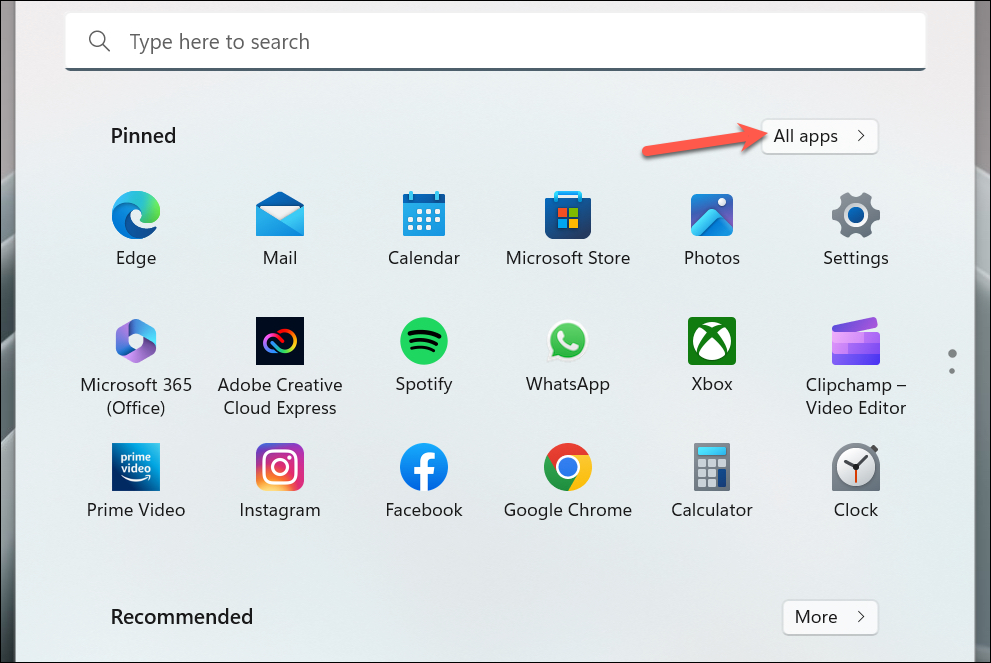
Step 2: Scroll down and click on the 'Accessibility' folder.
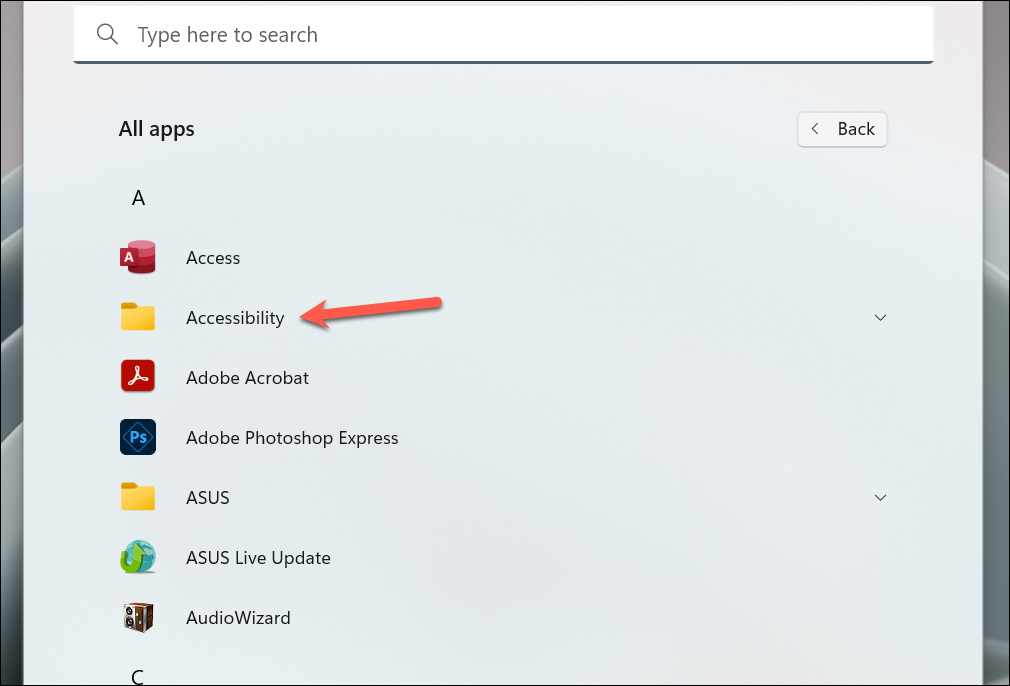
Step 3: Within the Accessibility options, select 'Live Captions'.
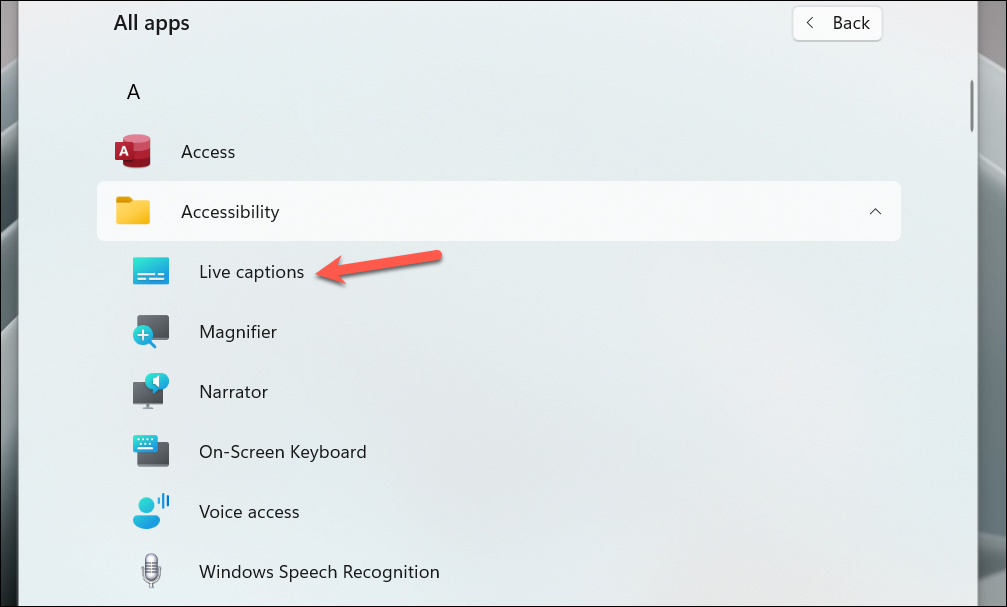
Method 4: Through the Settings App
Step 1: Open the 'Settings' app on your Windows 11 PC. You can do this by clicking the 'Start Menu' and selecting 'Settings' or by pressing Windows + I on your keyboard.
Step 2: In the Settings window, click on 'Accessibility' from the menu on the left.
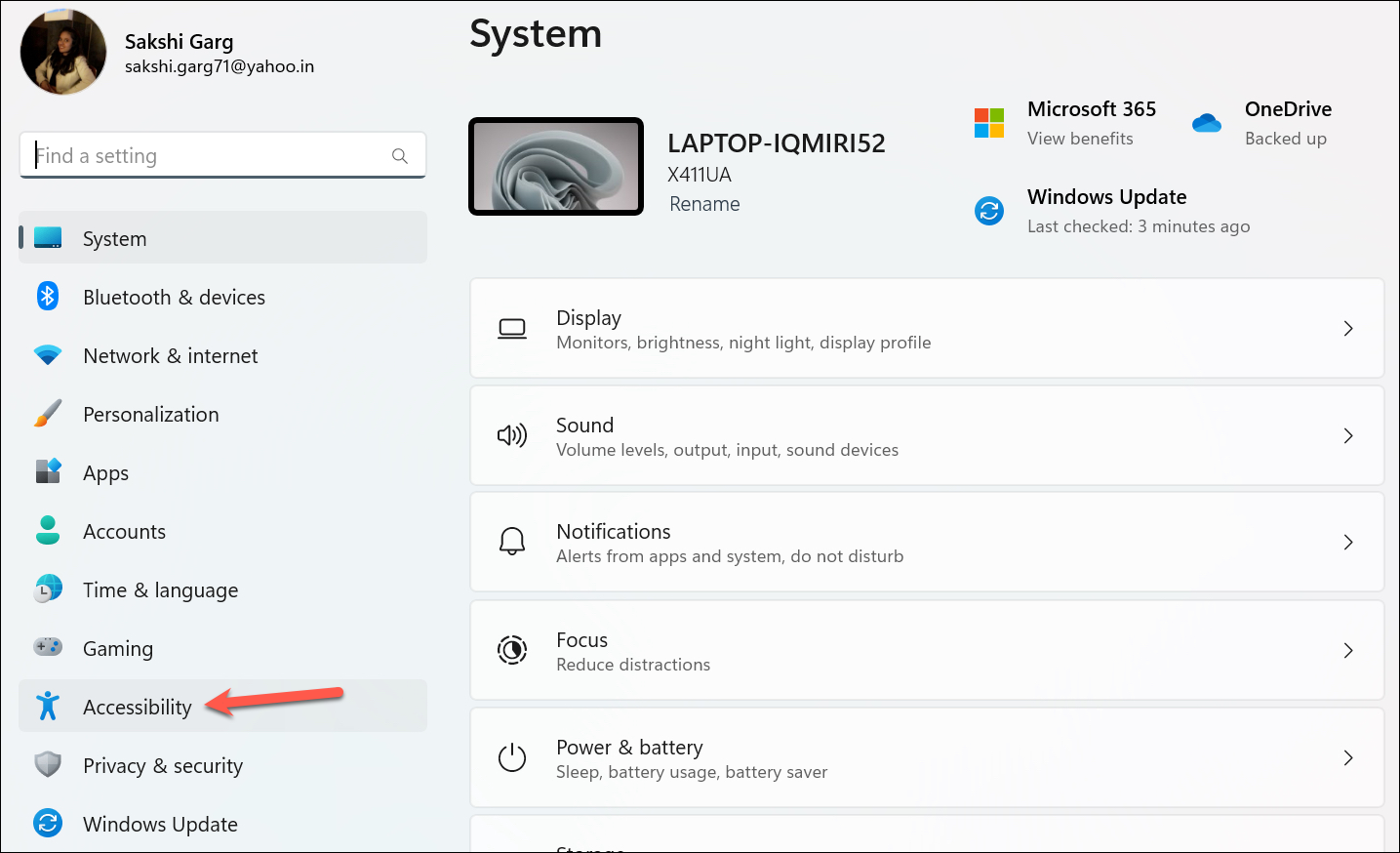
Step 3: Scroll down on the right pane and select 'Captions'.

Step 4: Toggle the switch next to 'Live Captions' to turn on the feature.
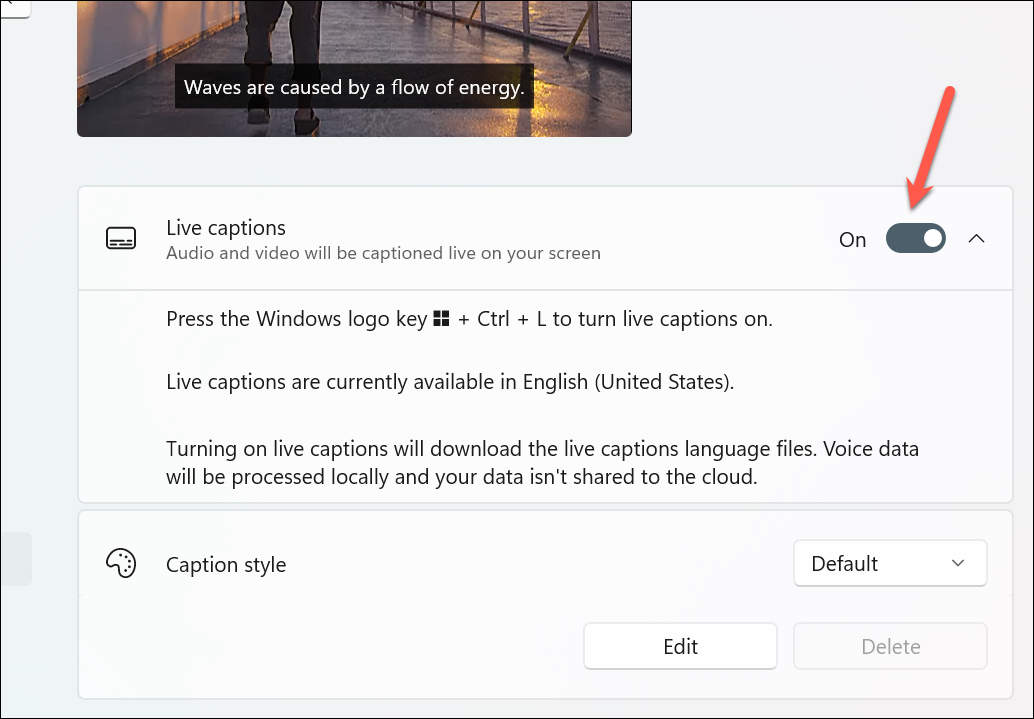
Customizing Live Captions Position
After enabling Live Captions, they appear in a floating window by default, which you can drag to any location on the screen. You can also change the default position of the captions to be docked at the top or bottom of your screen. Here's how you can customize the position:
Step 1: Click on the 'Settings' (gear) icon on the Live Captions window.
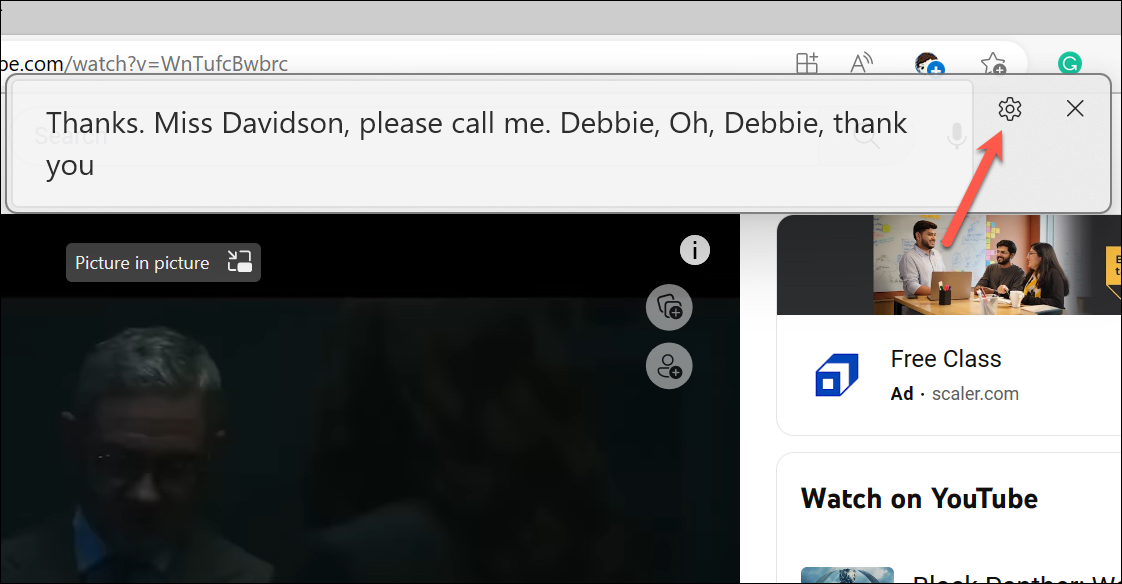
Step 2: From the dropdown menu, select 'Position'.
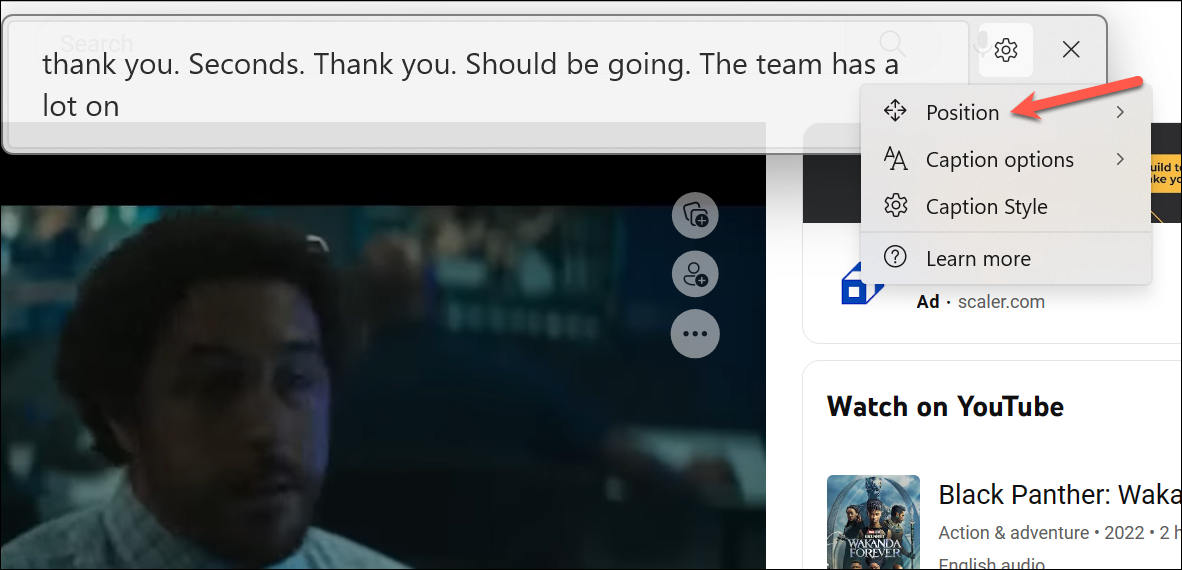
Step 3: Choose either 'Top' or 'Bottom' to dock the captions to your preferred location.
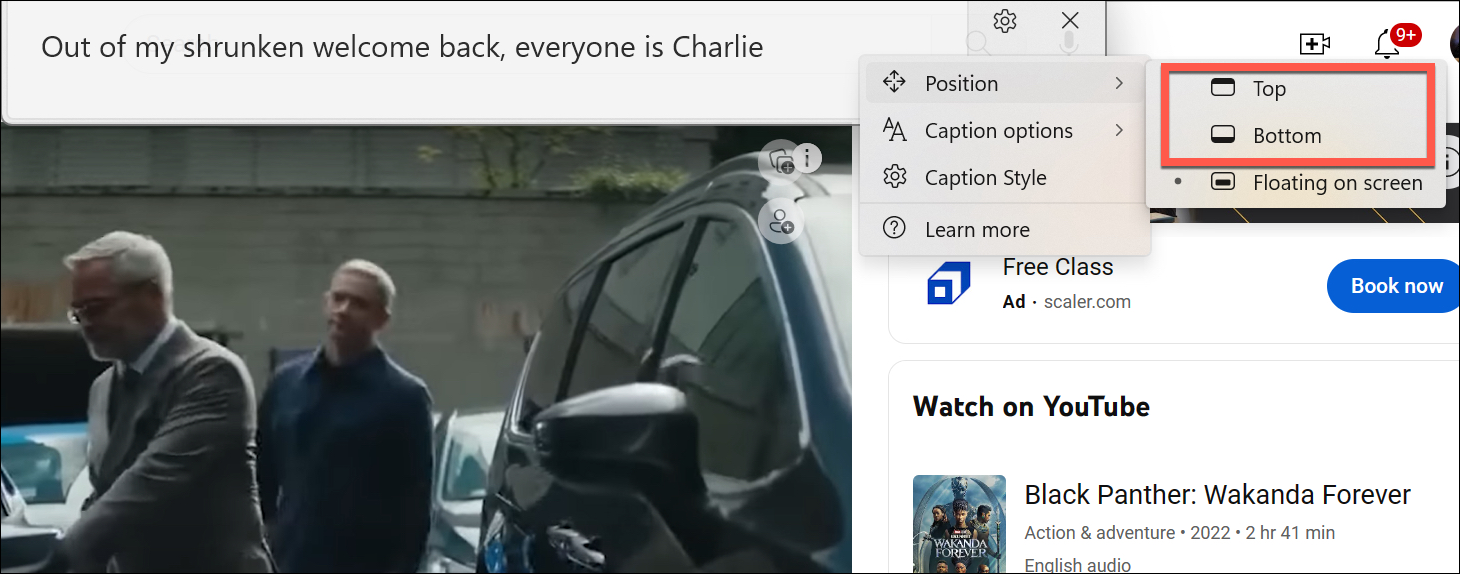
When docked, Live Captions will appear at the chosen edge of your screen, and Windows will adjust open applications so they do not overlap with the captions area.

To return to the floating window mode, select 'Floating on Screen' from the 'Position' menu.
You can also access other settings from the same menu, such as changing the caption style, managing profanity filters, and including microphone audio in the captions.
Enabling Live Captions in Windows 11 enhances the accessibility of your device, making it easier to follow along with audio content in various settings. With multiple ways to activate and customize Live Captions, you can choose the method that best fits your workflow and preferences.

